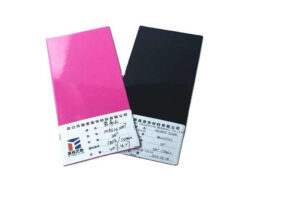Die Casting Powder Coating: Enhancing Durability and Aesthetics

Die casting powder coating is a surface finishing process that combines the benefits of die casting with a high-quality powdered coating application. This technique adds a protective layer to die-cast components, enhancing their durability, corrosion resistance, and aesthetic appeal. In this article, we will delve into the process of casting powder coating, highlighting its advantages, applications, and considerations.
1. Understanding Die Casting Powder Coating:
Die casting is a manufacturing process that involves injecting molten metal, such as aluminum or zinc alloys, into a mold cavity under high pressure. This results in the formation of complex and intricate shapes with excellent dimensional accuracy. Powder coating, on the other hand, is a dry finishing process where powdered paint is electrostatically charged and sprayed onto the die-cast component’s surface. The charged particles adhere to the part and fuse together during curing, forming a durable and uniform coating.
2. The Die Casting Powder Coating Process:
The process can be divided into the following key steps:
a) Surface Preparation:
The surface of the die-cast component is thoroughly cleaned to remove any contaminants, such as oils, dirt, or oxides. This step ensures proper adhesion of the powder coating.
b) Pre-Treatment:
The pre-treatment process involves applying a chemical treatment to the die-cast component’s surface to enhance adhesion and corrosion resistance. Common pre-treatment methods include degreasing, etching, and phosphating.
c) Powder Coating Application:
An electrostatic spray gun is used to apply the powdered paint onto the die-cast component’s surface. The charged particles are attracted to the grounded part, creating an even and controlled coating thickness.
d) Curing:
After the powder coating is applied, the die-cast component is subjected to a high-temperature curing process, typically in an oven. The heat causes the powder particles to melt and flow, forming a continuous, smooth, and protective coating.
3. Advantages:
Die casting powder coating offers several advantages over other surface finishing methods:
a) Enhanced Durability:
The powder coating forms a resilient and durable finish, providing excellent resistance to scratches, chips, and abrasions, thereby extending the lifespan of die-cast components.
b) Corrosion Resistance:
The powder coating acts as a barrier against environmental factors, preventing corrosion and oxidation of die-cast parts even in harsh conditions.
c) Aesthetic Appeal:
Die casting powder coating allows for a wide range of color options, gloss levels, and finishes, enhancing the appearance of die-cast components and making them visually appealing.
d) Eco-Friendly Solution:
Powder coating is a solvent-free process, minimizing volatile organic compound (VOC) emissions. It also produces less waste compared to traditional wet painting methods, contributing to a more sustainable manufacturing process.
4. Applications:
Die casting powder coating is widely used across various industries, including:
a) Automotive: Die-cast components such as engine parts, wheels, and decorative trims benefit from powder coating, providing both protection and aesthetic enhancements.
b) Consumer Electronics: Enclosures, frames, and housings of electronic devices can be efficiently coated with powder to achieve a sleek and durable finish.
c) Building and Construction: Architectural hardware, lighting fixtures, and bathroom fittings are often die-cast and powder-coated to withstand outdoor environments and enhance their visual appeal.
d) Furniture and Appliances: Die-cast furniture components and home appliances benefit from powder coating, ensuring a long-lasting and attractive finish.
Conclusion:
It combines the advantages of die casting with a robust and visually appealing powdered paint finish. This process enhances the durability, corrosion resistance, and aesthetic appeal of die-cast components across various industries. By understanding the die casting powder coating process and its advantages, manufacturers can achieve improved product performance, longevity, and customer satisfaction through this reliable surface finishing technique.



